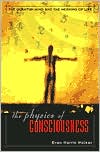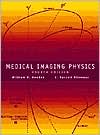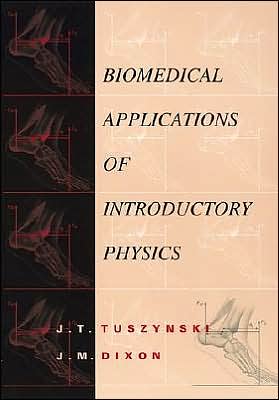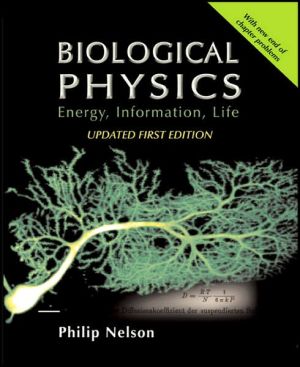Physical Biology of the Cell
Physical Biology of the Cell is a biophysics textbook that explores how the basic tools and insights of physics and mathematics can illuminate the study of molecular and cell biology. Drawing on key examples and seminal experiments from cell biology, the book demonstrates how quantitative models can help refine our understanding of existing biological data and also be used to make useful predictions. The book blends traditional models in cell biology with the quantitative approach typical in...
Search in google:
Physical Biology of the Cell is a biophysics textbook that explores how the basic tools and insights of physics and mathematics can illuminate the study of molecular and cell biology. Drawing on key examples and seminal experiments from cell biology, the book demonstrates how quantitative models can help refine our understanding of existing biological data and also be used to make useful predictions. The book blends traditional models in cell biology with the quantitative approach typical in physics, in order to introduce the reader to both the possibilities and boundaries of the emerging field of physical biology. While teaching physical model building in cell biology through a practical, case-study approach, the text explores how quantitative modeling can be used to build a more profound, intuitive understanding of cell biology. Cell Physical Biology of the Cell is beautifully crafted: self-contained and modular, it provided tutorials on fundamentals and has material to hold the interest of a more sophisticated reader. It is fast-paced, proceeding within each chapter from freshman basics to graduate level sophistication. The book requires minimal prerequisites: a curious mind and undergraduate calculus will go a long way. It can be used as an undergraduate or early graduate biophysics course in a physics or engineering department. In the context of a molecular cell biology course, it could complement Molecular Biology of the Cell (or its equivalent), serving as a vehicle to introduce biology students to a quantitative way of thinking about biology. To truly master the physics presented in the book, one should do the problems provided with each chapter. These problems are well thought out and are a major teaching resource. (The instructor can also obtain a set of solutions). Because of these features, Physical Biology of the Cell offers a great deal of flexibility as a teaching tool.
Pt. 1 The Facts of LifeCh. 1 Why: Biology by the Numbers 3Ch. 2 What and Where: Construction Plans for Cells and Organisms 29Ch. 3 When: Stopwatches at Many Scales 75Ch. 4 Who: "Bless the Little Beasties" 119Pt. 2 Life at RestCh. 5 Mechanical and Chemical Equilibrium in the Living Cell 167Ch. 6 Entropy Rules! 215Ch. 7 Two-State Systems: From Ion Channels to Cooperative Binding 257Ch. 8 Random Walks and the Structure of Macromolecules 281Ch. 9 Electrostatics for Salty Solutions 327Ch. 10 Beam Theory: Architecture for Cells and Skeletons 357Ch. 11 Biological Membranes: Life in Two Dimensions 407Pt. 3 Life in MotionCh. 12 The Mathematics of Water 457Ch. 13 A Statistical View of Biological Dynamics 481Ch. 14 Life in Crowded and Disordered Environments 513Ch. 15 Rate Equations and Dynamics in the Cell 539Ch. 16 Dynamics of Molecular Motors 589Ch. 17 Biological Electricity and the Hodgkin-Huxley Model 647Pt. 4 The Meaning of LifeCh. 18 Sequences, Specificity, and Evolution 681Ch. 19 Network Organization in Space and Time 721Ch. 20 Whither Physical Biology? 775Index 787
\ From The CriticsReviewer: Bruce A. Fenderson, PhD(Thomas Jefferson University)\ Description: This book explores the application of mathematics and physics to cell structure and function, addressing fundamental questions in biophysics, providing quantitative models, and describing research applications. Topics are sequenced according to common physical properties. For example, the mathematics of DNA bending is applied to other long, thin biological structures such as filamentous proteins. The book is divided into four major sections on Facts of Life, Life at Rest, Life in Motion, and Meaning of Life, and its 20 chapters cover topics ranging from the mathematics of water to dynamics of molecular motors. The primary focus is on cell biology, biophysics, and physical biochemistry.\ Purpose: The authors' purpose is to communicate a style of thinking about discovery in science and they hope to illustrate how mathematical principles can be applied to the study of life. How does it work? Let's make a numerical guess. Is our quantitative model valid? How can our model be tested? The authors believe that a synthetic approach to research based on mathematics, physics, and biology will serve to "illuminate the world around us."\ Audience: According to the authors, this book "is appropriate for a first course in physical biology or biophysics for either undergraduates or graduate students." It is also intended "for any scientist interested in learning the basic principles and applications of physical modeling for research in biology...and provides a novel perspective even to scientists who are already familiar with some of the material." It also may provide a high-voltage "career accelerator" for those interested in biochemistry and molecular cell biology. The book does not assume extensive prior knowledge on the part of readers, and students should not be intimidated by the complexity of the subject. The authors are outstanding educators.\ Features: The authors convey a sense of excitement about the field of quantitative biology. Nearly every page is filled with fun facts that stimulate the imagination. How thick is the plasma membrane? What is the radius of an average protein? Every chapter begins with a visionary quotation. Chapters include an overview, conclusion, problem set, and references for further reading. The end-of-chapter problems encourage students to apply quantitative model-building skills to experimental data from the primary research literature. Boxes highlight key concepts such as "experiments behind the facts" and "math behind the models." Section headers are often declarative statements such as, "The cytoskeleton can be viewed as a collection of elastic beams." The continuous tone figures and line drawings are descriptive and captivating. The book comes with an extensive list of ancillaries including a solutions manual for end-of-chapter problems and a complete set of teaching slides and videos.\ Assessment: This comprehensive biophysics textbook is a joy to read. The authors use principles of Socratic teaching to help make learning fun. They ask basic questions and emphasize first-order approximations that lead to quantitative models. Everywhere readers turn, there is mathematics and the power of this approach is compelling. The authors succeed in illustrating the scientific approach to problem solving. Good questions are often more instructive than lists of simple facts. The end-of-chapter problem sets provide an excellent opportunity for students to demonstrate application of their knowledge. This book should serve as a template for the design of other science textbooks. It is an outstanding, scholarly resource that will capture the attention of a wide range of students and faculty in the biomedical and life sciences.\ \ \ \ \ Nature Cell Biology. . . [The] authors of Physical Biology of the Cell have produced one of the first multi-purpose textbooks that is readily accessible to both physicists and biologists . . . . When read from cover to cover, the book is both very instructive and highly entertaining with the authors using humour to deliver strong take-home messages in each chapter . . . .Physical Biology of the Cell provides instructors with excellent material to create a graduate level course in biology or physics. The book is also very timely as it presents the most recent views in cell biology. As physicists, we strongly agreed with the message of the authors, but will this be the case for our biologist colleagues? We will know for sure if blackboards in biology departments, like the sand on the book cover, are soon covered in equations!\ \ \ Quarterly Review of Biology. . . a monumental undertaking by three outstanding experts in the field . . . the book is a rich collection of special topics in biophysics . . .\ \ \ \ \ CellPhysical Biology of the Cell is beautifully crafted: self-contained and modular, it provided tutorials on fundamentals and has material to hold the interest of a more sophisticated reader. It is fast-paced, proceeding within each chapter from freshman basics to graduate level sophistication. The book requires minimal prerequisites: a curious mind and undergraduate calculus will go a long way. It can be used as an undergraduate or early graduate biophysics course in a physics or engineering department. In the context of a molecular cell biology course, it could complement Molecular Biology of the Cell (or its equivalent), serving as a vehicle to introduce biology students to a quantitative way of thinking about biology. To truly master the physics presented in the book, one should do the problems provided with each chapter. These problems are well thought out and are a major teaching resource. (The instructor can also obtain a set of solutions). Because of these features, Physical Biology of the Cell offers a great deal of flexibility as a teaching tool.\ \








